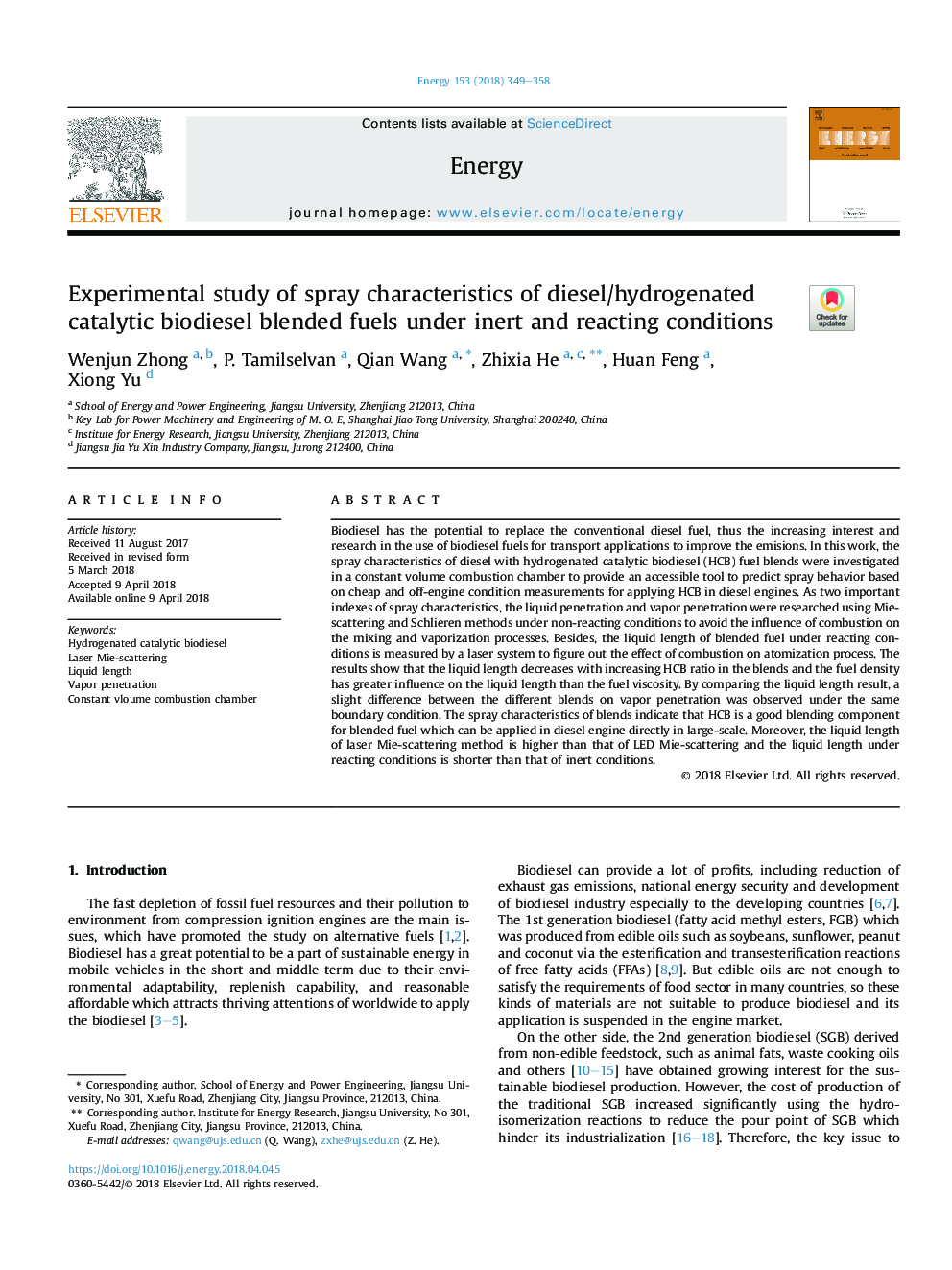| Article ID | Journal | Published Year | Pages | File Type |
|---|---|---|---|---|
| 8071569 | Energy | 2018 | 10 Pages |
Abstract
Biodiesel has the potential to replace the conventional diesel fuel, thus the increasing interest and research in the use of biodiesel fuels for transport applications to improve the emisions. In this work, the spray characteristics of diesel with hydrogenated catalytic biodiesel (HCB) fuel blends were investigated in a constant volume combustion chamber to provide an accessible tool to predict spray behavior based on cheap and off-engine condition measurements for applying HCB in diesel engines. As two important indexes of spray characteristics, the liquid penetration and vapor penetration were researched using Mie-scattering and Schlieren methods under non-reacting conditions to avoid the influence of combustion on the mixing and vaporization processes. Besides, the liquid length of blended fuel under reacting conditions is measured by a laser system to figure out the effect of combustion on atomization process. The results show that the liquid length decreases with increasing HCB ratio in the blends and the fuel density has greater influence on the liquid length than the fuel viscosity. By comparing the liquid length result, a slight difference between the different blends on vapor penetration was observed under the same boundary condition. The spray characteristics of blends indicate that HCB is a good blending component for blended fuel which can be applied in diesel engine directly in large-scale. Moreover, the liquid length of laser Mie-scattering method is higher than that of LED Mie-scattering and the liquid length under reacting conditions is shorter than that of inert conditions.
Keywords
Related Topics
Physical Sciences and Engineering
Energy
Energy (General)
Authors
Wenjun Zhong, P. Tamilselvan, Qian Wang, Zhixia He, Huan Feng, Xiong Yu,
